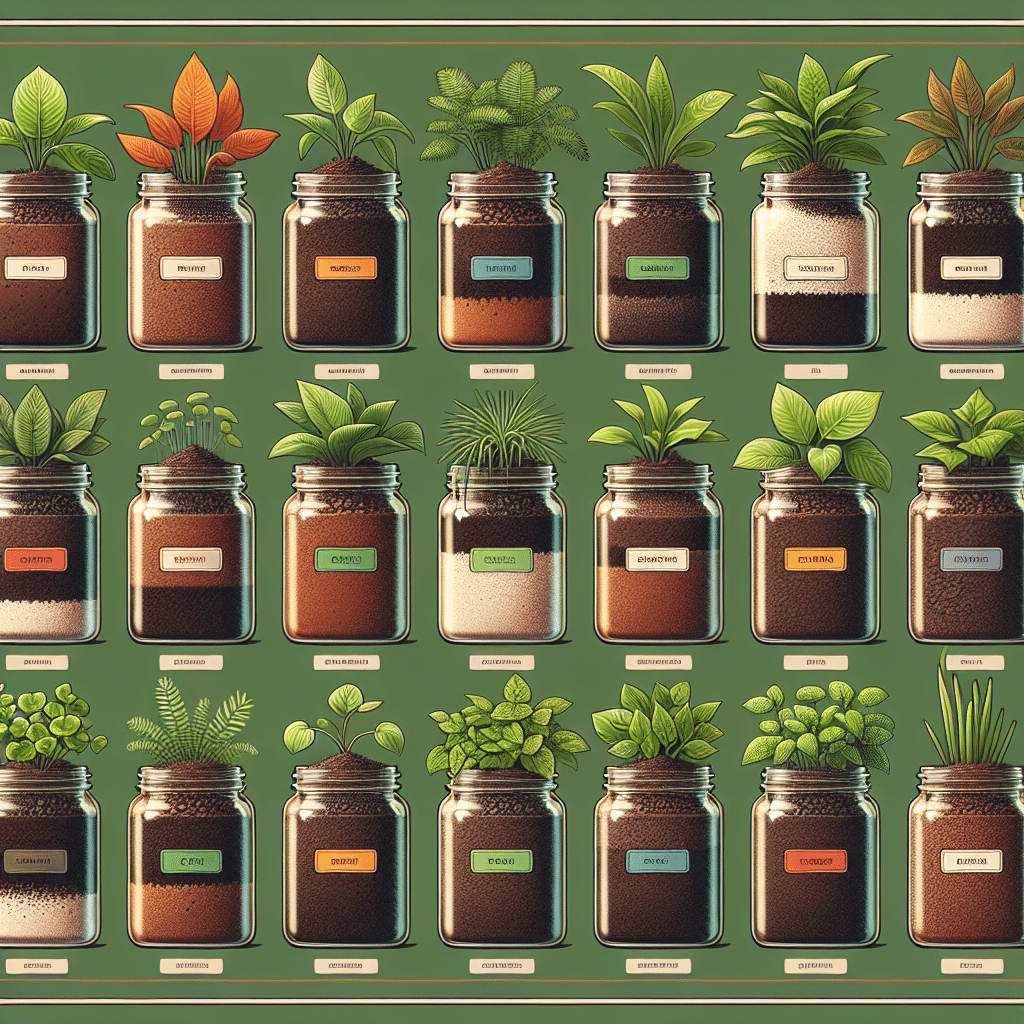Understanding Soil Mixes for Indoor Plants
When it comes to indoor gardening, the right soil mix is paramount. Indoor plants require proper aeration, drainage, and nutrient retention, which a good soil mix can provide. Here are some of the best soil mixes for thriving indoor plants.
1. General Purpose Potting Soil
Composition: General purpose potting soil is a blend of peat moss, perlite, and vermiculite. This combination promotes good drainage while retaining moisture and nutrients.
Advantages:
- Versatile for a wide variety of houseplants.
- Lightweight and easy to handle.
- Retains moisture well, reducing the need for frequent watering.
Best For: Ferns, Peace Lilies, and Pothos.
2. Cactus and Succulent Mix
Composition: This mix typically contains coarse sand, perlite, and sometimes small gravels, ensuring excellent drainage.
Advantages:
- Prevents root rot by allowing excessive water to escape.
- Provides adequate aeration to the roots.
- Generally nutrient-poor, which helps prevent over-fertilization.
Best For: Aloe Vera, Echeveria, and Snake Plants.
3. Orchid Potting Mix
Composition: Orchid mix usually features bark chips, sphagnum moss, and perlite. The chunky material allows for airflow around the roots.
Advantages:
- Excellent drainage prevents water from sitting at the roots, which is crucial for orchids.
- Maintains moisture without compacting.
- Encourages healthy root growth and prevents fungal issues.
Best For: Phalaenopsis and Cattleya orchids.
4. African Violet Mix
Composition: African violet soil mixes often contain peat moss, a bit of perlite, and vermiculite, offering a slightly acidic pH.
Advantages:
- Well-drained and moisture-retentive, perfect for these moisture-loving plants without fungi.
- Lightweight, which makes it suitable for small pots.
- Includes nutrients tailored for African violets.
Best For: African Violets, Streptocarpus, and Gloxinia.
5. Seed Starting Mix
Composition: This mix features fine texture components such as peat moss, vermiculite, and perlite, providing a light and airy medium.
Advantages:
- Offers excellent seed germination rates due to the fine texture.
- Free from fertilizers, preventing the risk of seedling burn.
- Retains moisture while promoting good drainage.
Best For: Starting any seeds, including tomatoes and peppers.
6. Custom Indoor Plant Mix
Composition: A homemade blend can be customized to preference. Consider using peat moss, perlite, coconut coir, and earthworm castings for nutrients.
Advantages:
- Tailored to meet specific plant needs and preferences.
- Can include organic matter for added nutrients.
- Flexibility allows you to adjust the pH and texture.
Best For: Any houseplant you wish to customize for specific needs.
7. Hydroponic Growing Media
Composition: Popular hydroponic mediums include rock wool, coconut coir, and clay pellets. They provide a unique environment without soil.
Advantages:
- No soil pests or diseases to worry about.
- Highly oxygenated, supporting healthy root growth.
- Precise control over nutrients and moisture levels.
Best For: Herbs, Leafy Greens, and Tomatoes in hydroponic systems.
8. Bonsai Soil Mix
Composition: A typical bonsai mix may include Akadama (a clay-based aggregate), pumice, and lava rock.
Advantages:
- Provides excellent drainage and aeration to roots, critical for bonsai trees.
- Lightweight and allows for more compact structures.
- Retains moisture without being soggy.
Best For: Ficus, Juniper, and Pine bonsais.
9. Tropical Plant Mix
Composition: This mix usually features a higher organic content, combining peat, bark, and perlite to provide the moisture-loving properties required by tropical plants.
Advantages:
- Retains moisture while ensuring good drainage.
- Nutrient-rich, fostering lush growth.
- Supports the characteristics of tropical plants that prefer high humidity.
Best For: Rubber Plants, Fiddle Leaf Figs, and Monstera Deliciosa.
10. Terrarium Soil Mix
Composition: Creates a layered ecosystem typically with activated charcoal, sphagnum moss, and potting soil.
Advantages:
- The bottom layer often prevents root rot through excellent drainage.
- Activated charcoal helps in filtering impurities.
- Creates a microenvironment suitable for moisture-loving plants.
Best For: Ferns, Moss, and small Tropical Plants in a closed terrarium.
Tips for Choosing the Right Soil Mix
- Plant Type: Understand the water and nutrient needs of your specific plants.
- Drainage: Ensure the mix allows for ideal drainage to avoid waterlogged soil.
- Organic Matter: Look for compost or organic options for added nutrients.
- Customization: Consider creating a blend tailored for plant needs and local conditions.
Maintenance and Care
- pH Levels: Regularly test the soil pH. Most houseplants prefer neutral to slightly acidic soil (pH of 6.0-7.0).
- Aeration: Occasionally refresh the soil by mixing or topping with fresh soil to maintain aeration.
- Watering Technique: Water methods, like bottom watering or misting, can vary depending on soil types and plant requirements.
Conclusion
Plant care begins with the right soil mix. By choosing the appropriate soil for your indoor plants, you can create an environment that encourages robust growth and vibrant foliage. Whether you prefer ready-made mixes or DIY solutions, understanding the components of each mix can make a significant difference in your indoor gardening success. Happy planting!
